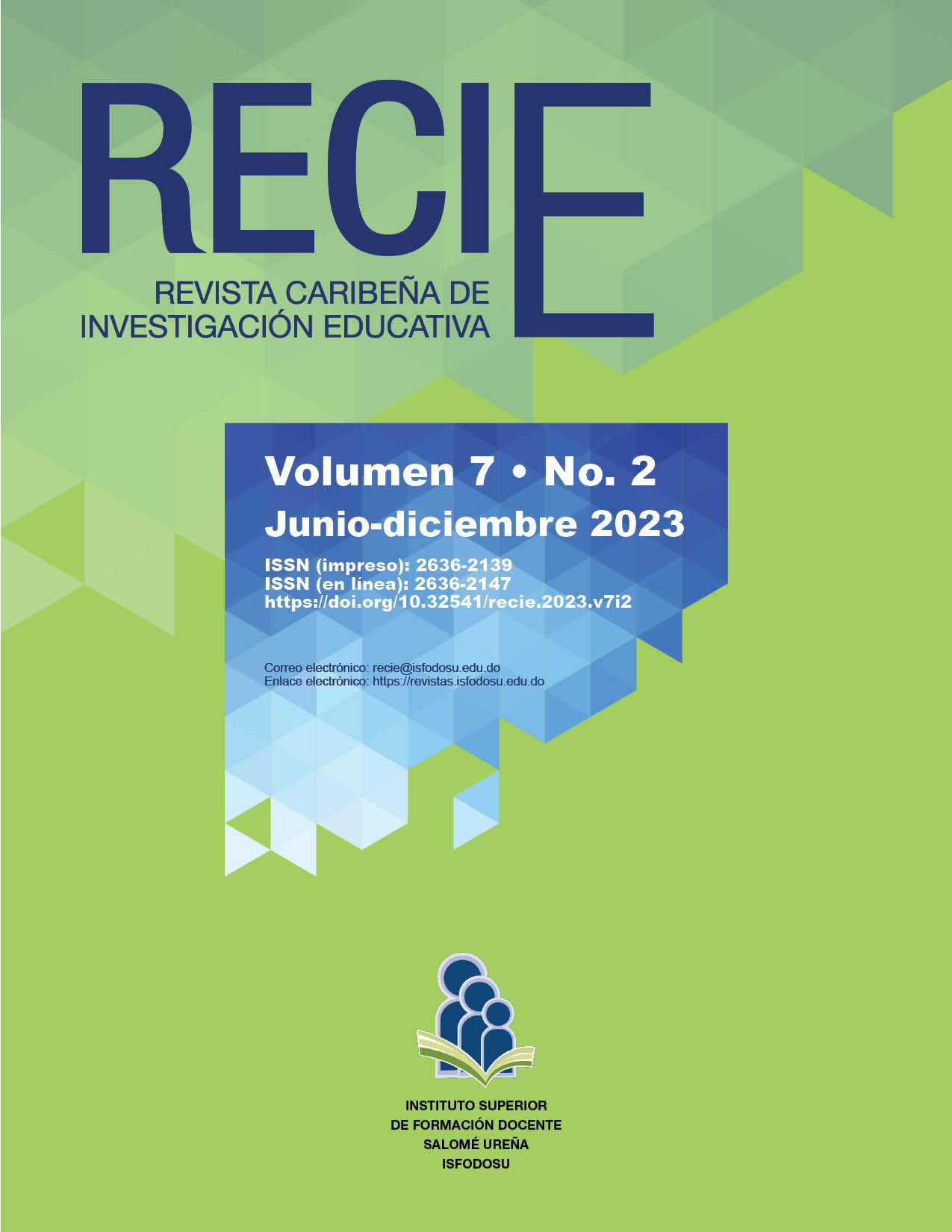Español Dominicans in New York City Higher Education, 2000-2019
Authors
Julian Antonio Valdés-Ramírez
Universidad Católica del Este, Higuey-La Altagracia, República Dominicana.
[email protected] https://orcid.org/0000-0001-8957-3822Detalles
Published
Abstract
Access to more and better education is one of the main motives for Dominican migration to the United States. Bearing in mind that Higher Education is the culmination of Formal Education, this research collects, systematizes, and analyzes the statistics on enrollment, schooling, and tertiary qualifications of Dominicans in New York City, and compares them with the performance of other ethnic and Hispanic groups. The processing and statistical analysis reveal a significant change in the educational progress of Dominicans, which until this investigation was described as slow and insufficient. With an above-average tertiary enrollment growth rate, Dominicans outpaced the growth of Americans and other immigrants during the 2000-2019 period. That momentum made them the group of Latino origin in New York City with the most people with Higher Education degrees.
Keywords
How to Cite
Downloads
Metrics
References
Alcalde, R., & Hernández, R. (2018). Motivational Styles and Educational Expectations in Immigrant Fami-lies: An Analysis Based on Case Studies of Dominican Inmigrant Families. Revista Commplutense de Educación, 29(2), 455-474. https://doi.org/10.5209/RCED.52795
Amargos, O. (2016). Estado de situación del sistema nacional de educación y formación técnico-profesional de la República Dominicana. CEPAL. https://r.issu.edu.do/l?l=14246ln4
Anzures Tapia, A., Mayorga, R., Oliveira, G., Bartlett, L., Kallery, C., Carvajal, C. N., & Martinez-Martinez, V. (2016). Negotiating contradictions: Educación among Dominican Transnational Mothers in New York City. Ethnography and Education, 12(3), 347-366. https://doi.org/10.1080/17457823.2016.1253026
Aponte, S. (1999). Dominican Migration to the United States, 1970- 1997: An Annotate Bibliography. The CUNY Dominican Studies Institute. https://r.issu.edu.do/l?l=14247wEn
Baum, S., Kuroe, C., & McPherson, M. (2013). An Overview of American Higher Education. The Future of Children, 23(1), 17-39. doi:10.1353/foc.2013.0008.
Bergad, L. (2011). The Latino Population of New York City, 1990-2010. Center for Latin America, Caribbean, and Latino Studies. https://r.issu.edu.do/l?l=14248DuZ
Bergad, L. W. (2021). The Dominican Population of the New York Metropolitan Region, 1970-2019. Center for Latin America, Caribbean, and Latino Studies. https://r.issu.edu.do/l?l=14249veC
Canelo, J. F. (1982). Dónde, por qué, de qué, cómo viven los dominicanos en el extranjero. Un informe sociológico sobre la e/inmigración dominicana, 1961-1982. Editora Alfa y Omega.
Chapman, F. (1987). Illiteracy and educational development in the Dominican Republic: an historical ap-proach (Publication No. 1896) [Doctoral Dissertation, University of Massachusett Amherst]. UM Scholarworks. https://r.issu.edu.do/l?l=14046pRT
Del Castillo, J., & Mitchel, C., editores. (1987). La inmigración dominicana en los Estados Unidos. Uni-versidad APEC.
Duany, J. (1994). Quisqueya on the Hudson: The Transnational Community of Dominicans in Washington Heights. City University of New York. https://r.issu.edu.do/l?l=14250626
EDUCA. (2015). Informe de progreso educativo. ¡Decididos a mejorar! EDUCA. https://r.issu.edu.do/l?l=14251Fd1
Grasmuck, S., & Pessar, P. R. (1991). Between Two Islands. Dominican International Migration. University of California Press.
Hendricks, G. (1974). The Dominican Diaspora. From the Dominican Republic to New York City-Villagers in Transition. Columbia University.
Hernández, R., & Rivera-Batiz, F. L. (2003). Dominicans in the United State: A Socioeconomic Profile, 2000. CUNY Dominican Studies Institute. https://r.issu.edu.do/l?l=142526va
Hernández, R., Rivera-Batiz, F., & Sisay S. S. (2022). Dominicans in the United States: A Socioeconomic Profile. CUNY Dominican Studies Institute. https://r.issu.edu.do/l?l=14253DwG
Hernández, R., & Stevens Acevedo, A. (2004). Against All Odds: Dominican Students in Higher Education in New York. City University of New York. https://r.issu.edu.do/l?l=14260Vg7
IDEICE. (2018). Tercer estudio regional comparativo y explicativo 2013 (TERCE). Reporte temático factores asociados al aprendizaje. IDEICE. https://r.issu.edu.do/l?l=14254gPU
Irizarry, J. G. (2012). Los caminos: Latino/a Youth Forging Pathways in Pursuit of Higher Education. Journal of Hispanic Higher Education, 11(3), 291-309. https://doi.org/10.1177/1538192712446322
Kasinitz P., Waters, M. C., Mollenkopf, J. H., & Holdaway, J. (2009). Inheriting the City: The Children of Immigrants Come of Age. Russell Sage Foundation and Harvard University Press.
López, C. (2011). Moving up the education ladder: Second-generation Dominicans in higher education. New York University. https://eric.ed.gov/?id=ED534471
López, N. (2002). The Structural Origins of High School Drop Out Among Second Generation Dominicans in New York City. En M. M. Suárez-Orozco, C. Suárez-Orozco & D. Qin-Hilliard (Eds.). The New Immi-grants and American Schools: Interdisciplinary Perspectives on the New Immigration (pp. 205-225). Routledge.
Louie, V. (2006). Second-Generation Pessimism and Optimism: How Chinese and Dominicans Understand Education and Mobility through Etnic and Transnational Orientations. The International Migration Re-view, 40(3), 537-572. https://doi.org/10.1111/j.1747-7379.2006.00035.x
Morales, E. E. (2000). A Contextual Understanding of the Process of Educational Resilience: High Achieving Dominican American Students and the "Resilience Cycle". Innovative Higher Education, 25(1), 7-22. https://doi.org/10.1023/A:1007580217973
Oberdaberning, D., & Schneebaum, A. (2017). Catching up? The educational mobility of migrants’and natives’children in Europe. Applied Economics, 49(37), 3701-3728. https://doi.org/10.1080/00036846.2016.1267843
Orna, H. C. (1992). Dominicans in Higher Education. Punto 7 Review: A Journal of Marginal Discourse, 2(2), 50-56. https://r.issu.edu.do/l?l=14041ryZ
Ravenstein, E. G. (1889). The Laws of Migration. Journal of the Royal Statistical Society, 52(2), 241-305. https://doi.org/10.2307/2979333
Shaw, K. M., & Goldrick-Rab, S. (2006). Work-First Federal Policies: Eroding Access to Community Colleges for Latinos and Low-Income Populations. New Directions for Community Colleges, 133, 61-70. https://doi.org/10.1002/cc.228
Soy, R. M., & Bosworth, S. (2008). Dominican Women Across Three Generation: Educational Dreams, Goals and Hope. CUNY Dominican Studies Institute. https://r.issu.edu.do/l?l=14255Fsp
UNESCO. (2019). Informe de seguimiento a la educación en el mundo 2019. Migración, desplazamiento y educación: Construyendo puentes, no muros. Ediciones UNESCO. https://r.issu.edu.do/2N
UNESCO. (2022). La encrucijada de la educación en América Latina y el Caribe. Informe regional de monitoreo ODS4-Educación 2030. Ediciones UNESCO. https://r.issu.edu.do/l?l=14557i53
Valdés R., J. A. (2016). Política social dominicana. Contextos, instituciones e inversiones. Desde sus inicios hasta 2012. Cuesta Veliz Ediciones.
World Bank. (2018). World Development Report 2018: Learning to Realize Education’s Promise. World Bank. https://r.issu.edu.do/l?l=14256KzF
Section
License
Copyright (c) 2023 Julian Antonio Valdés-Ramírez

This work is licensed under a Creative Commons Attribution-NonCommercial-ShareAlike 4.0 International License.
